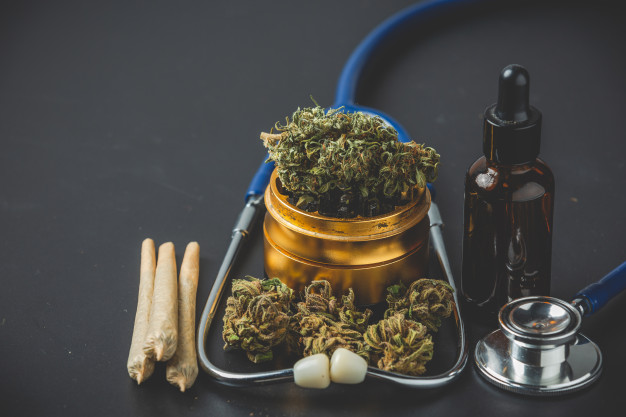
Type I diabetes can be an inherited disease. But Type 2 diabetes is a preventable chronic disease, with lifestyle changes including balanced nutrition and physical activity. In tandem with America’s growing obesity rate, the prevalence of diabetes diagnoses increases at an astounding rate.
The 2020 National Diabetes Statistics Report from the Centers for Disease Control and Prevention (CDC) revealed startling data. There are currently 34.2 million Americans or 10.5% of the U.S. population living with diabetes. An additional 7.3 million Americans met the diagnostic criteria of diabetes but were undiagnosed. And less than 20% of people with diabetes are meeting the requirements for glucose control.
What kind of symptoms do people with uncontrolled diabetes experience? Chronic pain, nerve damage, vision loss, and increased risk of a cardiovascular event (heart attack or stroke). People with diabetes are more prone to severe and often life-threatening infections like sepsis. And people with diabetes have compromised immune systems, which increases comorbidity from viruses like influenza or pneumonia. And most recently, Covid-19.
There are five ways that cannabis may help patients with diabetes manage symptoms of chronic disease. And in some cases, medical marijuana may even help improve insulin sensitivity and reduce the risk of comorbidities.
- Cannabis May Reduce and Repair Neuropathic Damage
Imagine sitting at work, and suddenly you start to feel pins and needles in your foot. Depending on the severity of nerve damage, people with diabetes can experience light tingling sensations to a painful burning and stabbing sensation in limbs and extremities.
The neuropathic pain is not limited to only the feet or toes, as nerve damage can happen anywhere in the body. It can occur in a patient’s hands, fingers, lower back, arms, and neck. Many patients think it is a loss of circulation when neuropathy first begins to appear. But no amount of massage or rubbing the area will relieve the nerve pain. It has to go away on its own. And the nerve pain can last for hours.
There are a variety of prescription medications that patients can be provided to reduce or resolve nerve pain. However, most over the counter (OTC) and prescription pain remedies can increase blood sugar levels. And NSAIDs can also increase blood pressure for people with diabetes.
- Medical Marijuana Daily May Help Regulate Blood Glucose Levels
In 2013, one study conducted in the United States by Elizabeth A Penner, Hannah Buettner, and Murray A. Mittleman found a significant link. Cannabis was found to improve insulin sensitivity for people with Type II diabetes. And doctor-supervised use of cannabis was associated with lower rates of obesity.
- Cannabis Can Be an Effective Analgesic for Chronic Pain
One of the common symptoms that people with diabetes develop is numbness. Over time, high levels of blood sugar essentially burn out nerve receptors in the body. Nerve receptors are responsible for registering feelings like heat and cold, pressure on your body, and pain.
When nerve damage escalates over time, individuals with diabetes experience nerve firing. While the nerves are dying, they begin to message or fire sensations through the body. Instead of being triggered by a phenomenon like an injury or strain, stabbing or needle-like pains can be random in any area of the body.
Some prescription medications like opioids are addictive and can be harmful for long-term use. Anti-inflammatory analgesics like NSAIDs can have side-effects. Both classes of drugs can take up to one hour before pain symptoms subside. Conversely, medical cannabis can provide pain relief in as little as ten minutes.
Medical cannabis can be taken as a tincture or drops under the tongue. This method is called sublingual uptake, where cannabis oil is rapidly absorbed. Many patients may couple tinctures, vaporized cannabis, or smokable marijuana with THC infused topical creams for effective localized pain relief.
Nerve damage from diabetes can also impact sexual health for men and women. Suppository cannabis products may also help to reduce pain and discomfort. Vaginal suppositories may improve sexual functioning for women and treat symptoms of endometriosis. Hemorrhoids and rectal pain can also be treated using cannabis suppositories.
- May Help With Insomnia and Sleep Disorders
One of the most common symptoms of diabetes is frequent urination. When glucose levels are too high, the body attempts to remove sugars by increasing urination. Women who are pregnant have the same problem. How do you get a good night of sleep when you need to get up and go to the bathroom frequently?
There are other causes of insomnia and poor sleep patterns for people with diabetes. Restless leg syndrome happens as a result of nerve damage. Patients with diabetes are also at a higher risk of obstructive sleep apnea. They can have a hard time falling asleep and staying asleep.
Cannabis can help improve the quality of sleep for individuals with diabetes. However, there are some precautions to take. For instance, it is critical to time your intake of cannabis, depending on how long marijuana remains in your system. If you have a low tolerance to THC, the psychoactive effects of marijuana can last up to eight hours. You will want those effects to be worn off before you wake up and head to work.
Certain strains of cannabis provide a sedative experience. Others can provide a highly energetic and creative surge, making getting to sleep a lot harder. A medical dispensary can help you choose a strain that can help you sleep. And one that is high in CBD to promote better blood glucose control.
- Some Strains Can Help Suppress Appetite
The most common side-effect of cannabis is the dreaded “munchies.” Certain strains of marijuana can induce a ravenous craving or appetite. For most people, a little snack after a smoke session isn’t a big deal. But for people with diabetes who are using medical cannabis, it can create big problems.
Regulating carbohydrates is critical for individuals with Type 1 or Type 2 diabetes. Counting carbs and choosing high fiber and low sugar meals and snacks are essential. Diabetes is one of the most commonly approved qualifying health conditions for states that have legalized medical cannabis. And many patients find that cannabis is more effective for pain and symptom relief than other remedies.
Strains that have high levels of CBD can counteract “the munchies.” The human body has CB2 receptors as well. And when cannabis that is high in CBD is consumed, it can inhibit CB1 receptors from triggering cravings and appetite.
Since diabetes can present with a host of symptoms, finding affordable and safe treatments are essential. Medicinal cannabis can help patients reduce the severity of specific symptoms.












